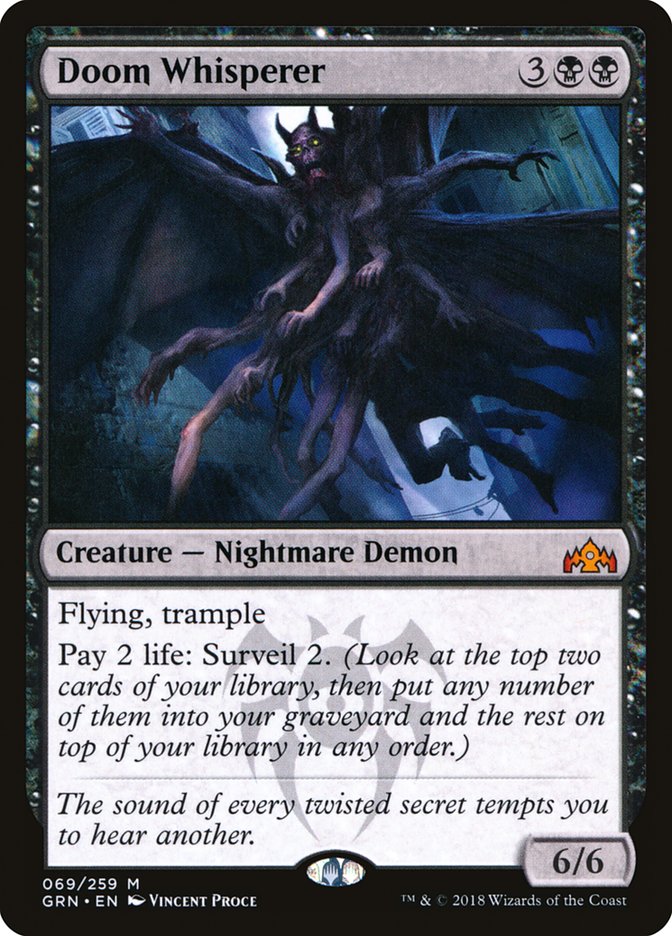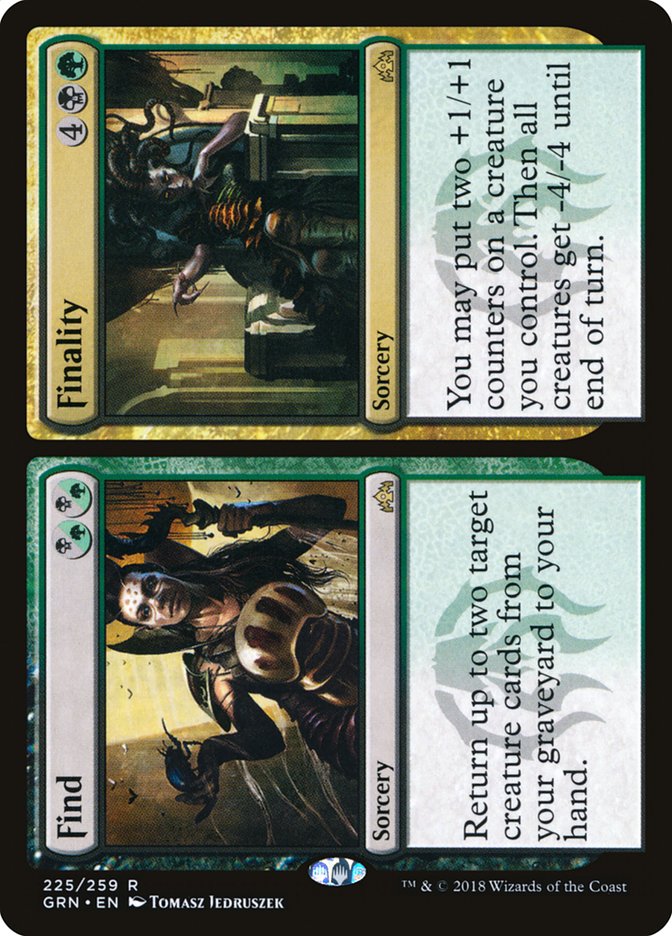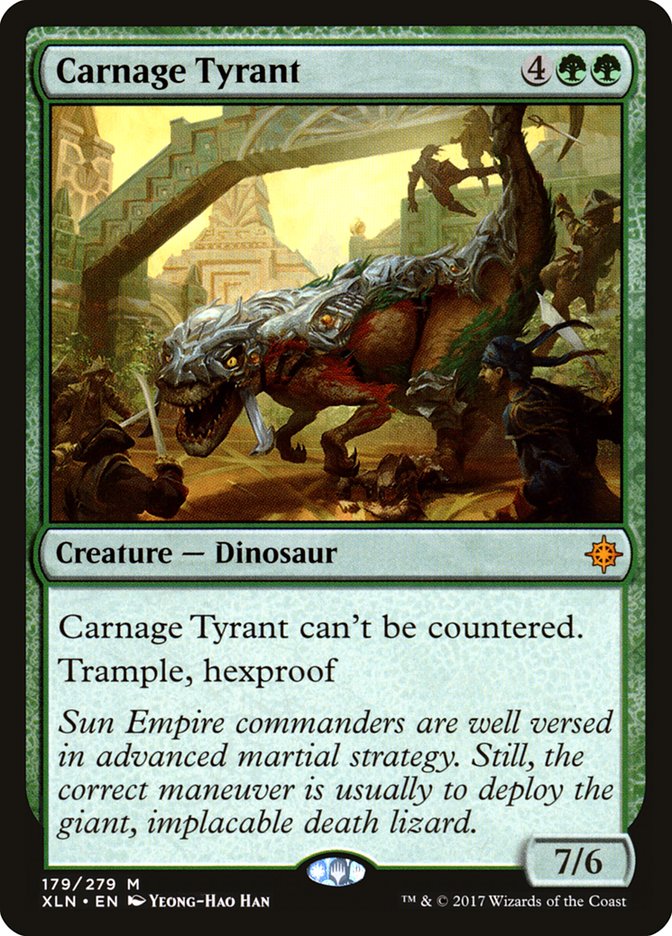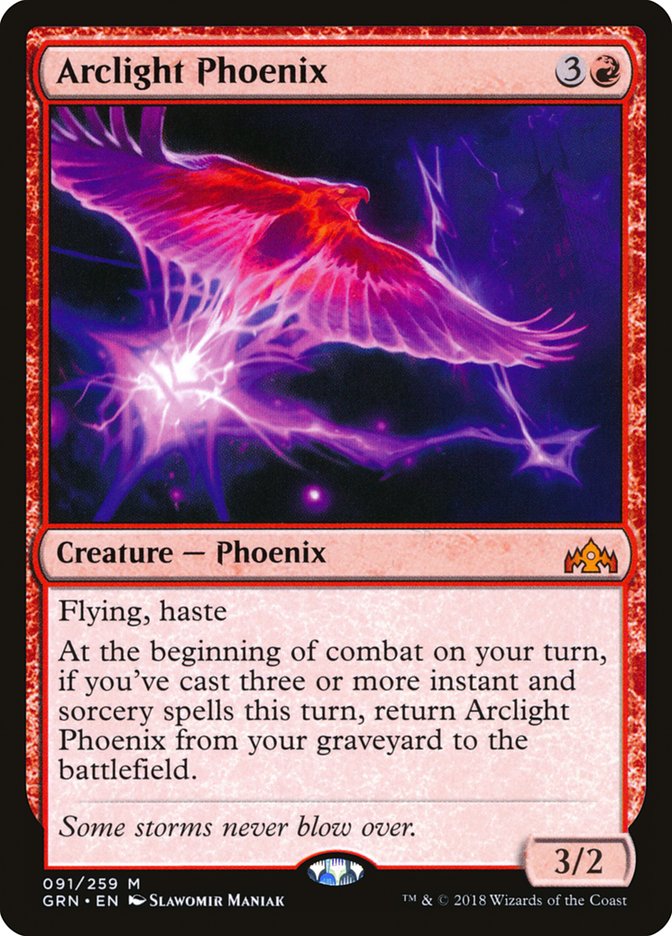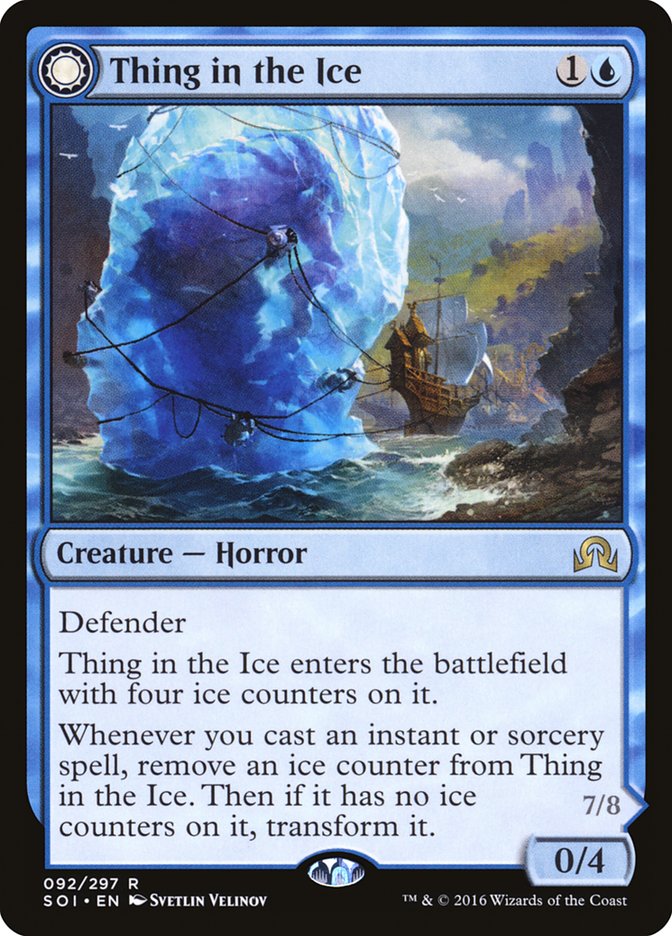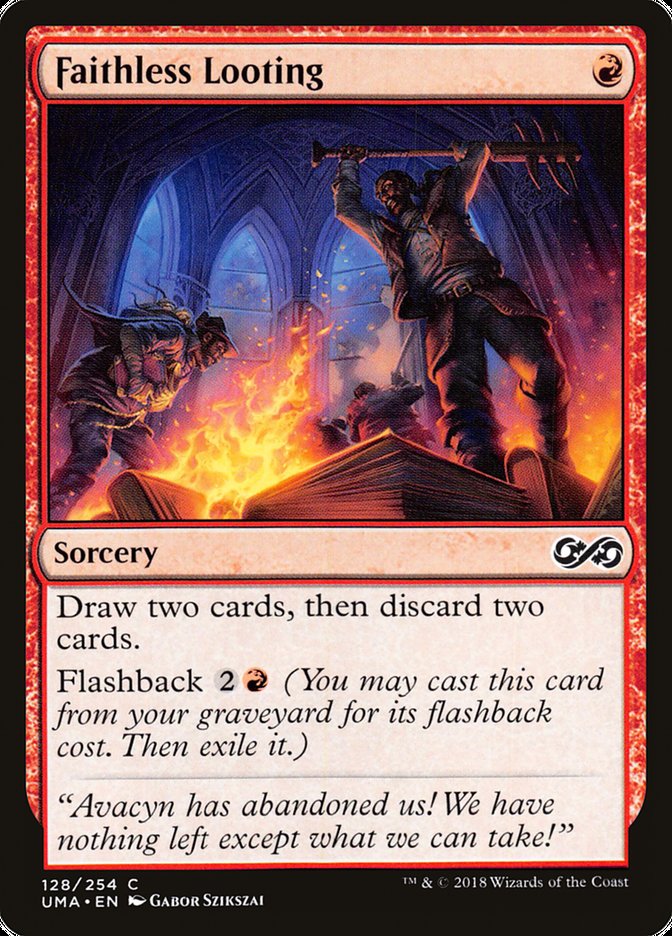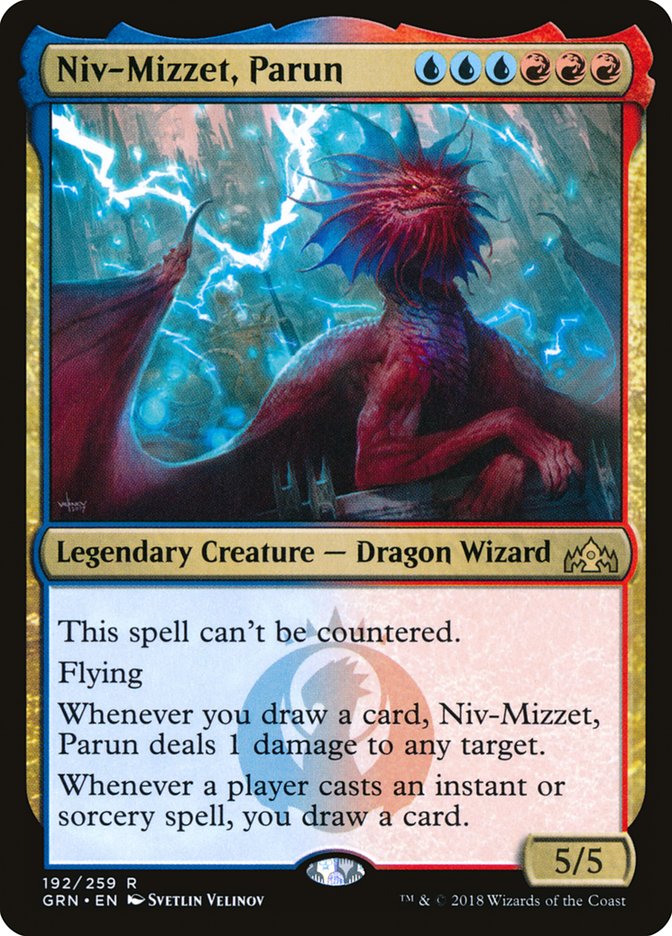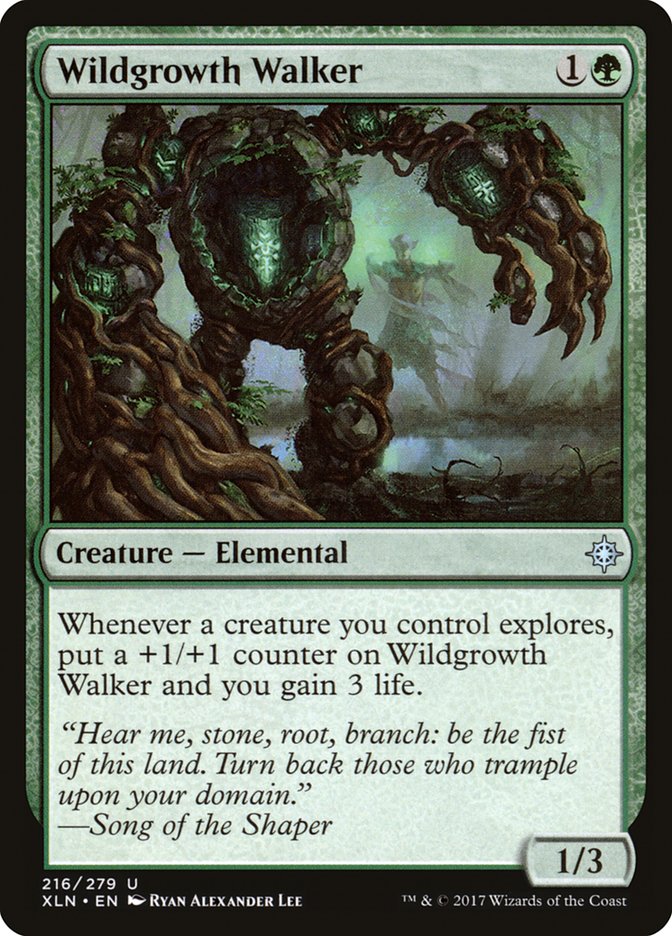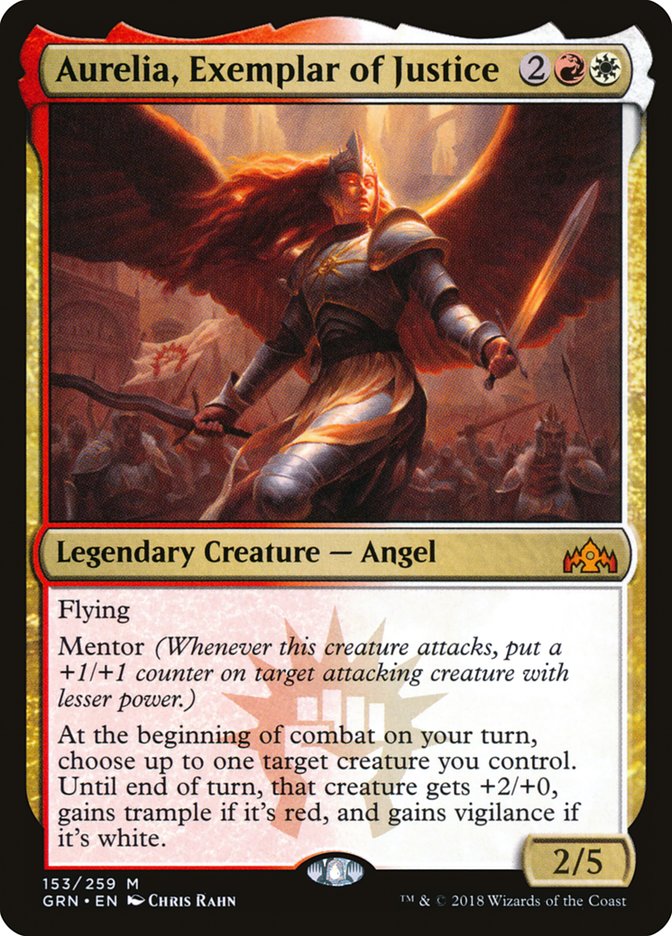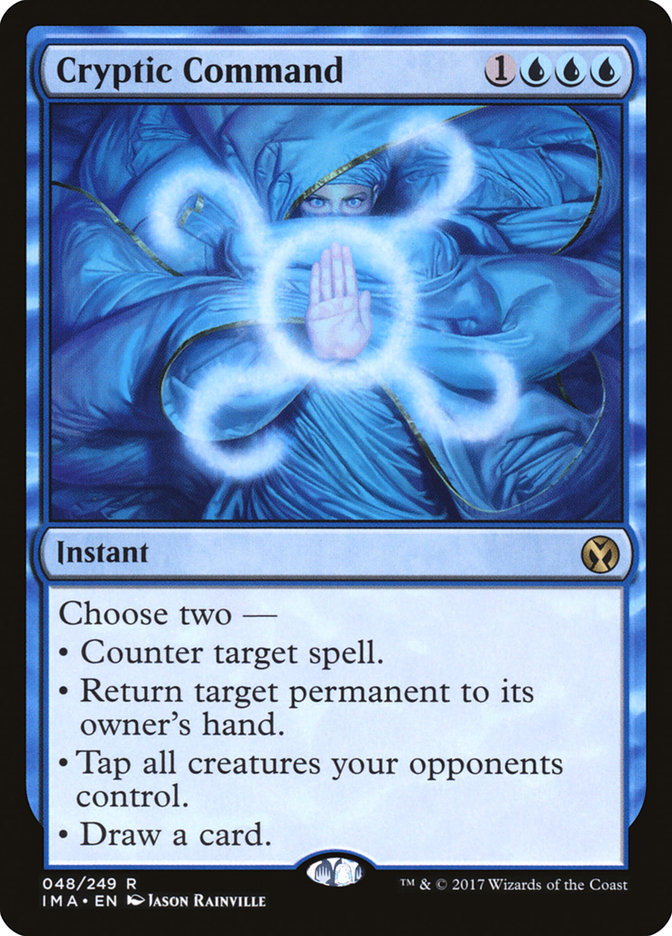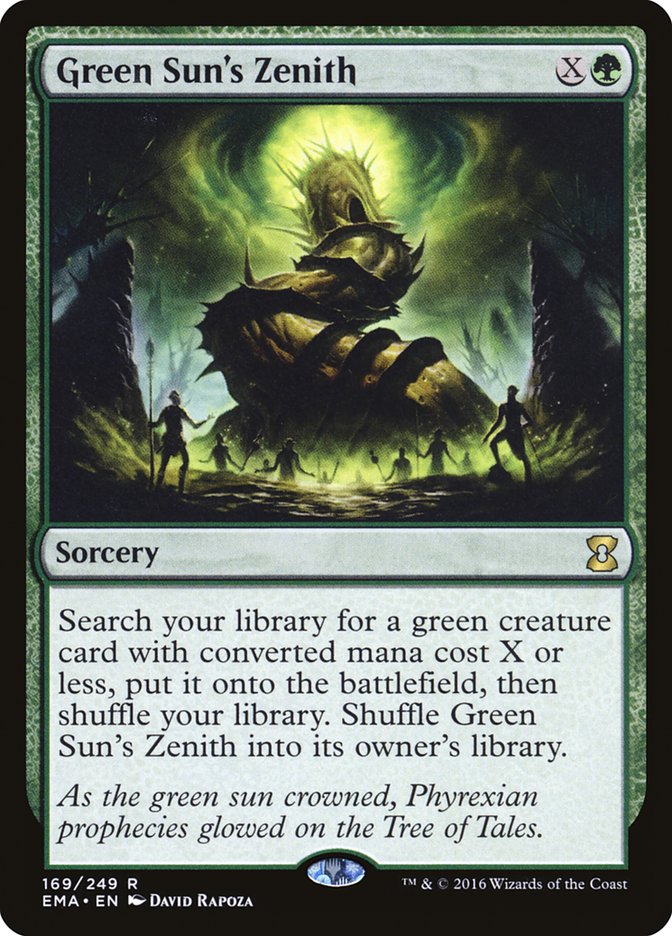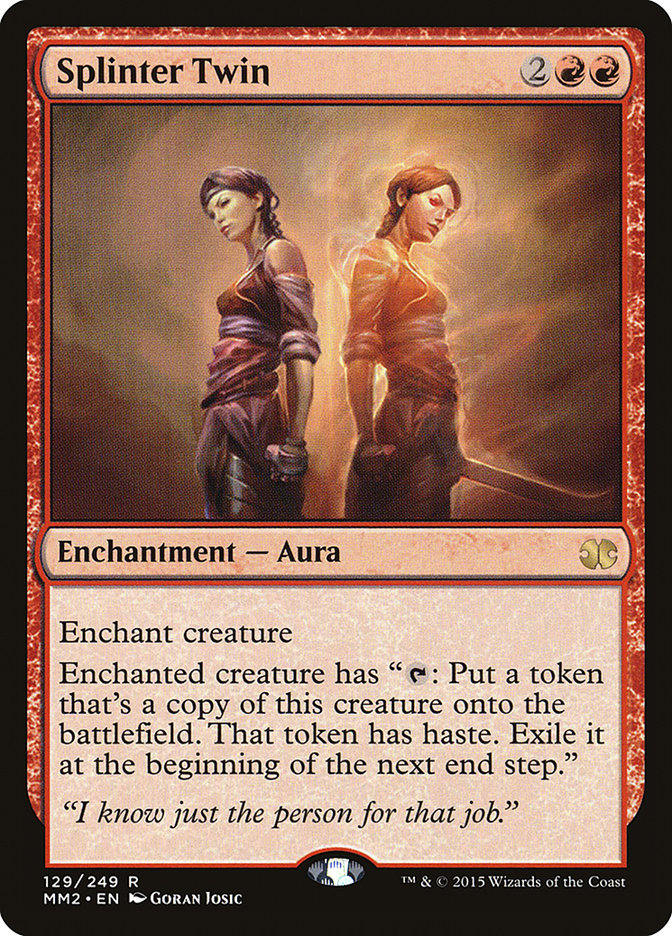Welcome to another edition of
Fact or Fiction!
Today, Sam Black, Bryan Gottlieb, and Tom Ross are here to render
their verdicts on five statements about
the Season Two Invitational and some hot topics in Magic: the
Gathering. Don’t forget to vote for the winner at the
end!
1. With Atsushi Nakashima’s win at GP Shizuoka, Golgari
Midrange is the Standard deck to beat in the Standard portion of the
Season Two Invitational.
Sam Black: Fiction
. There’s nothing especially groundbreaking in Atsushi’s deck. Standard is
a balanced format with Golgari, Jeskai, Izzet, and possibly Boros Aggro
occupying a top tier. I’d put Mono-Red, Mono-Blue, Selesnya, Dimir/Grixis
Control and other decks a level below that, and I’d add that there’s a lot
of room for other decks like Midrange and control Boros decks, ramp
strategies, and a lot of other fringe options beyond that that aren’t
really all that much less competitive.
Standard is healthy, balanced, and I don’t believe a best deck or single
deck to beat will emerge before the release of Ravnica Alliagence.
If anything, I’d argue that Selesnya was the deck that performed above
expectation this weekend, not that that makes it a deck to beat, of course.
So far, when a deck in this format has done well, it’s been targeted a
little and failed to replicate success without changing somewhat. I expect
that to continue, although this GP happening in a multiple GP weekend in
Asia may result in people not paying quite as much attention to it, so it
may be less dangerous to play the winning deck. My biggest takeaway from
these results is that they’re emphatically not transformative, and Standard
will continue to be exactly what it has been, which is balanced.
Bryan Gottlieb: Fiction
. The problem with this question is that looking for the Standard “deck to
beat” is an outmoded way of thinking. For the past few years, we’ve had the
specter of one or two strategies that were strictly better than everything
else looming over Standard. Present Standard is free of this tyranny, and
rather than looking for the “deck to beat” we should be looking for the
“tech to beat.” At GP Shizuoka, that tech seemed to be Detection Tower,
which simultaneously took some power away from Carnage Tyrant and Dive
Down. I would expect Detection Tower to continue to appear at the Season
Two Invitational. This begs the question, “what’s next?”
My money is on threats which look to completely sidestep the ever
escalating hexproof/anti-hexproof wars-perhaps a white-based aggro deck
leveraging the stickiness of Hunted Witness might push its way to the top
of the metagame, or maybe Rekindling Phoenix and Legion Warboss in Ben
Weitz’s Big Red deck will spend the weekend making Detection Towers and
Plaguecrafters look silly. Even something like Sam Black’s creatureless
Grixis Conjecture list might show up ready to completely sidestep the game
that everyone else is playing.
Regardless of what rises to the top at the Invitational, don’t expect that
deck to suddenly become the “deck to beat” either. The tools present allow
for continuous adaptation, and we’ll be right back here next week with a
new target to focus on.
Tom Ross: Fiction
. Golgari Midrange may be the most popular deck in Japan, but the Season
Two Invitational is in ‘Murica.
My take for deck to beat is Izzet Drakes. In fact, I think people will find
doubling down on Arclight Phoenix in both Standard and Modern to be a fun
adventure and a cool thing to mention/achievement unlock. Heck, I kinda
want to double on mono-white decks for the times.
Also Pro Tour Guilds of Ravnica was held in Atlanta and has had a
lot of influence in the region regarding the different flavors of Boros
being popular.
2. With Ross Merriam’s win at SCG Baltimore, Izzet Phoenix
is the Modern deck to beat in the Modern portion of the Season Two
Invitational.
Sam Black: Fiction
. Bant Spirits has had too high a metagame share and too much success to be
displaced by a single tournament. Izzet Phoenix made a strong case that
it’s a tier 1 Modern Strategy, and it’s likely to be heavily represented at
the Season Two Invitational specifically, but there’s no way it can be
called the deck to beat in Modern.
For the most part, Modern hasn’t had a deck to beat, but to the extent that
it ever does, right now, I believe it’s clearly Bant Spirits. That
said, I still think of a serious deck to beat as occupying 20% or more of
the metagame, which Spirits definitely doesn’t, and nothing in Modern has
been close to in a long time. I think thinking of Spirits as a deck to beat
is misleading because you still shouldn’t really go far out of your way to
beat it, and it’s fine to play something that has a losing matchup, since
you’ll only play against it around once in ten rounds. In this kind of
situation, I’m weirdly almost more comfortable calling Bant Spirits the
“best” deck in Modern than the “deck to beat,” because that implies an
incentive structure that just doesn’t exist.
Bryan Gottlieb: Fiction. Ross’s deck is offering a new form of the light-disruption, quick-clock
archetype that players have wanted to be good in Modern since its
inception. Long time veterans of Modern surely remember when Sultai Delver
was the rage, or just a few months ago when people were talking bans for
Grixis Death Shadow. Where are these decks now?
The fact is, linear decks in Modern are overpowered, and while a deck like
Ross’s can target a percentage of them, there do not exist the broad
answers required (think Force of Will) for a deck like this to stand firm
against linear combo decks that will show up to pray on the archetype if it
begins to take on a large enough metagame share. I would happily play Ad
Nauseam or Tron against Ross’s list, and those decks are going to pick up a
bunch of other free wins along the way that Ross’s deck simply does not
have access to.
I want decks like this to be great in Modern. It would increase my
enjoyment of the format substantially. However, winning big in Modern is
about choosing the right unfair, linear option for a given week. As of now,
I’d still lean towards Ironworks or Amulet. If Ross’s deck picks up in
popularity, maybe Karn Liberated comes back. Either way, fair decks will
always be left chasing their tails to some extent. That doesn’t mean they
won’t find occasional success, but it will be difficult for them to set up
shop at the top of the metagame for any extended length of time.
Tom Ross: Fact.
When I think “deck to beat” I think of dethroning the champion. Izzet
Phoenix is the king of the hill right now and only growing in strength.
Maybe not Ross Merriam’s card-for-card deck, but the card Arclight Phoenix
and decks with it are quite beloved, and we’ve only scratched the surface
of their exploration. Their popularity and potency are both trending
upwards very sharply. It’s also a blast to play with.
Jeskai Control and Bant Spirits may or may not show up in higher numbers
than Arclight Phoenix decks. I certainly consider those decks that you have
to get through to finish with a good record. However, the deck with the
title right now is Izzet Phoenix, and thus, is by definition the deck to
beat.
3. With numerous viable decks and a metagame that’s
consistently evolving weekly, Guilds of Ravnica Standard is
the best Standard format of all time.
Sam Black: Fact
. Best of all time is a big statement, but I honestly think we’re there. I
mean, don’t get me wrong, I feel really weird claiming that “best Standard
format of all time” is a fact–what I really mean is “opinion that I share
with moderate confidence,” which is to say that I’m not 100% certain it’s
even my favorite Standard format of all time, but to find a contender, I
have to go all the way back to Kamigawa/original Ravnica
Standard, which was another awesome, diverse format to be sure, but also
long enough ago that I feel like it has to be benefiting from being one of
the first formats where I found success. That success came from an unusual
deck that I loved playing. Really, it’s hard for me to imagine that design
could really have been better that long ago or earlier, and since I’m
pretty confident this is better than anything since then; I think to me,
it’s the best it’s ever been.
Every deck has meaningful different options in every role and every point
in the curve, with a few exceptions. Any archetype can be tuned to have a
relatively good matchup against any other archetype, and there are tons of
sweet fringe strategies to explore. For me, this format is checking
basically every box.
Bryan Gottlieb: Fiction
. Standard is fantastic, but best of all time is a bit of a stretch. While
adaptability within archetypes is at its apex, there are still a limited
number of top tier decks. Golgari Midrange, Jeskai Control, Izzet Drakes,
Selesnya Tokens, Boros Aggro, and Mono-Red certainly feels like an
abundance of options following Rakdos’s dominance of the last Standard, but
I’d expect an all-time great format to boast ten or fifteen completely
reasonable archetypes.
I’d also note the fact that guilds are clearly dictating the viable
archetypes. This makes sense given both mana and card restrictions, and it
would be unfair to ask anything else from the format given the construction
of the block. However, that still must count against the format when
evaluating it in the pantheon of all-time greats. If the five new guilds of Ravnica Allegiance simply add four or five new viable archetypes,
while maintaining the intra-archetype malleability that has made Guilds of Ravnica Standard so great, then we can start having
discussions about the best Standard of all time. At this juncture, it feels
premature.
Tom Ross: Fact
. I’m biased here.
As a former member of Play Design, I’m proud to be a part of shaping this
Standard environment. It’s a bold statement to call it the best ever, and I
don’t have any numbers in front of me to prove so. This one is an opinion,
and I’ll stick to my guns here and say yes.
We got things right this time.
4. With Seth Manfield and Brad Nelson making the Top 8 of
SCG Baltimore with Jeskai Control, it’s time for the Magic community to
finally admit that Jeskai Control is a tier 1 Modern deck.
Sam Black: Fact
. I was unaware that the community hadn’t finally acknowledged this. Jeskai
Control was a fairly common choice among teams of pros at the last team
Modern GP, which indicates that a lot of the best players believed it was a
serious contender. While I personally don’t generally want to play a
control deck in Modern, that doesn’t mean it’s impossible to find success
with one, and Jeskai is the most successful of them at the moment. It has
proven success and makes up around 5% of the Modern metagame, which to me
puts it pretty squarely in the middle of Modern’s fairly extensive tier 1.
Jeskai has a lot of very powerful, efficient spells, a great sideboard, and
Teferi, Hero of Dominaria is extremely powerful, I just don’t see any
reason not to take this deck seriously.
Bryan Gottlieb: Fiction.
What this event told me is that Seth Manfield and Brad Nelson are tier 1
Magic players. With all due respect to other attendees, I don’t think its
much of a stretch to say that Seth and Brad were the two best Magic players
competing on Day Two of SCG Baltimore. Jeskai Control is a deck that can
absolutely allow a player to leverage a skill disparity, and Brad and Seth
both presented those disparities in spades. All of the points about answer
decks in Modern I made earlier still apply here, and the difficulty of
finding the correct answers is only amplified in a deck like Jeskai which
has little clock to speak of.
A few months ago on the GAM Podcast, we did an episode with Kevin Jones
where he talked about how much of his success on the SCG Tour was
predicated upon picking decks which allowed him room to outplay opponents
who were at a lower skill level. Unsurprisingly, Kevin Jones also plays a
lot of Jeskai Control. I’d note that much of the top-tier competition on
the SCG Tour subscribes to Kevin’s theory. Note Jadine Klomparens on Jund,
Jonathan Rossum and Ben Nikolich (and now Brad and Seth) on Jeskai Control,
and Ross Merriam on Izzet Phoenix. This means that when these players do
have to battle other top tier players, they are getting to do so under
something resembling an unwritten agreement. “None of that linear funny
business here, we’re playing Magic as Richard Garfield intended.” That’s a
large boon when both byes and skill are doing a nice job of routinely
filtering these players to the top of a field.
There is really nothing to see here besides two of the best Magic players
on the planet appropriately gravitating towards a deck that gave their
opponents plenty of room to misplay.
Tom Ross: Fiction
. Jeskai Control has been tier 1 for a while, at least on the SCG Tour. It
just hasn’t always been good. By that logic it’s not finally a
tier 1 deck.
As far as the grand scope of Modern goes, Jeskai Control is just another
deck in my eyes. It’s a great deck for day one of a tournament and for
physically owning (in the sense that it’s malleable to the metagame with a
lot of great options). Jeskai pops up with good results when small
creatures decks are running around, which they are right now. Jeskai
Control is more of a tool that can be brought out and be an effective
countermeasure rather than being a great pillar of the format on its own.
5. Wizards of the Coast made the correct decision by making
no changes to the Banned and Restricted list on November 26.
Sam Black: Fact, approximately.
More precisely, I really have no opinion about Legacy at the moment, but it
seems fine from when I have played. Vintage, I still believe is a
trainwreck, and Mishra’s Workshop and Bazaar of Baghdad should be
restricted, but I get that that’s just not happening.
I believe no change is appropriate for Modern, and that the most likely
next change that should be considered is the banning of Faithless Looting,
but I think we’re not quite there. I know there are a lot of people who
want various cards like Splinter Twin and Stoneforge Mystic unbanned; let’s
just say I’m not one of them. Mox Opal or Krark-Clan Ironworks can be on
the unofficial “Watchlist” if you like, but really, I think Faithless
Looting is leading the pack of busted Modern cards at the moment. No
changes in Modern is, to my mind, the heart of this question.
As for Standard, obviously banning anything would be crazy, so the question
is why Rampaging Ferocidon is still banned, and I don’t really have a
better reason than, “I guess no one cares?” Like, I really don’t know
what’s going on here. I don’t think it’d be causing any problems, but I’m
guessing maybe they think people would be more grumpy about potentially
needing to rebuy Rampaging Ferocidons they got rid of when they were banned
or something? Maybe they just thought the format was perfect as is, so
Rampaging Ferocidon couldn’t really help? I don’t know, I’d probably unban
it if it were up to me, but I really don’t think it’s a big deal.
Bryan Gottlieb: Fact. There are basically two decision points to discuss here. The first is the
decision not to unban Rampaging Ferocidon. The second is the decision to
make no changes in Modern.
With regards to Rampaging Ferocidon, I don’t want to waste a lot of time on
this. Standard is near perfect, and while Rampaging Ferocidon might be a
completely safe unban… just why? Why would you bother? What do you stand to
gain by throwing a wrench in what people are discussing as an all-time
great format? Tinkering with formats via ban list has a very real cost, and
part of that cost is the implication that action will often be forthcoming
when the banning/unbanning window rolls around. After the last few years,
it is imperative that Wizards of the Coast gets Standard players back to a
mode of thought which suggests that the banning and unbanning announcements
are almost never going to matter for their format. If that means that red
decks, which are already entirely competitive in Standard, don’t get
Rampaging Ferocidon back, then so be it. There is virtually no upside to an
unbanning.
And this segues very well to the discussion about the lack of changes in
Modern. I think a lot of the scuttlebutt that inevitably rises every time
we approach the banning and unbanning window comes from a fundamental
misunderstanding of the banned list’s purpose in Modern. A lot of this
misunderstanding is rooted in the very genesis of Modern, and Wizards of
the Coast’s stated tenets for the format. People seem to have a belief that
if a card doesn’t do anything to upset the rule of “Modern is a Turn 4
format” then it should not be included on the banned list. The purpose of
the Modern bans is not to create the absolute largest possible card pool
that the format can bear without breaking-it’s to make a compelling format
that people love to play.
Both Stoneforge Mystic and Splinter Twin would not meaningfully advance
this goal, even if they weren’t actively harmful (they are). Splinter Twin
dramatically limits the format’s viable decks while presenting a method of
ending the game that is entirely unfun and nearly impossible to interact
with in several circumstances. Stoneforge Mystic invalidates a huge
percentage of currently played creatures and could potentially eliminate
all tribal decks from viability.
And what upside is offered? I honestly don’t know. I think the hope is that
the format reconfigures itself to be something that more closely resembles
traditional Magic rather than the “two ships passing in the night” style of
Magic that Modern has always embraced. But Modern didn’t become the most
popular format by being like Standard. People love it because it’s
different, and as much as I sympathize with the camp that wishes for more
interaction in Modern, I think reshaping the format would be at odds with
what a large percentage of Modern’s most fervent supporters actually want.
As far as potential bans, the only deck that should really be on the watch
list right now is Ironworks, and that has as much to do with operations
concerns as format dominance. I do think the deck is ever so slightly
cleaner than Second Sunrise and would pass on a ban for the time being. If
Ironworks’ metagame share ever becomes reflective of just how powerful the
deck is, perhaps its win rate and fifteen minute turns will be shown to be
unacceptable, but as a dramatically underrepresented archetype, it has
avoided ire for the time being.
Tom Ross: Fact
. It ain’t broke. Don’t fix it.


